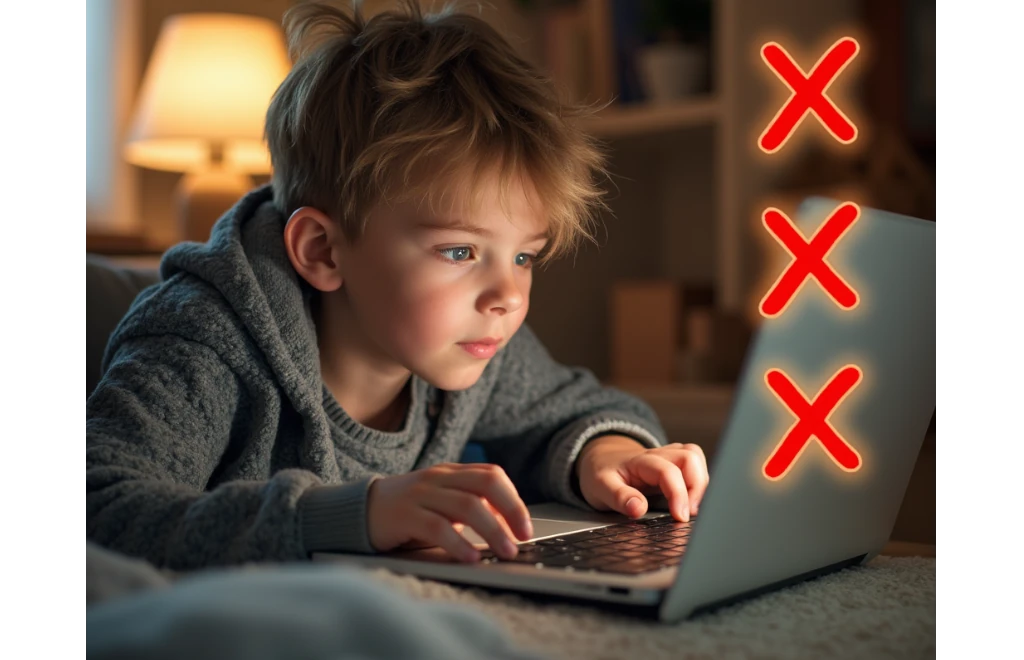As a parent, you’ve likely spent a lot of time protecting your child from the dangers and inappropriate content they might encounter online. But what should you do if an explicit image suddenly appears while they’re innocently scrolling through YouTube? It’s a stressful situation to imagine, but knowing how to respond can make all the difference.
Rest assured, you’re not alone. We’ve compiled actionable advice to help you guide your child through this experience, safeguard them moving forward, and turn the moment into a valuable learning opportunity.
Note: This article focuses on accidental exposure to explicit content while browsing casually. If your child has intentionally sought out such material, we have resources to address that as well.
Take a Deep Breath
First, center yourself and try not to overreact. It’s perfectly normal to feel upset, overwhelmed, or even as though you’ve failed as a parent. However, discovering that your child has been exposed to inappropriate content is unfortunately a common challenge in today’s digital world.
The internet is teeming with advertisements, videos, and other unexpected things that pop up, even when kids aren’t seeking it out. For instance, even seemingly innocuous games like Block Blast have shown to flash sexualized advertisements across the screen. Take a minute to collect your own thoughts so you can be the calm, reassuring presence your child needs right now.
Validate Their Feelings
Children can feel just about any emotion after seeing explicit content online, and it depends on their age and what they have seen. These may include feelings of fear, confusion, curiosity, or disgust—all are valid. Acknowledge their feelings to make them feel heard and supported. You might say something like, “What you saw might have been upsetting or confusing, and it’s completely normal to feel that way. My job as your parent is to help you understand it.”
Age-Appropriate Context
Younger children might be confused or upset if they find explicit images and most often don’t understand why. Provide a simple explanation that your child can understand. You may say something like this: “Some things on the internet are meant for adults but sometimes show up where kids can see them. It’s not your fault, but it’s important to avoid those kinds of things because they can be confusing or harmful.”
For older children, this might be an opportunity to start a conversation about topics like healthy relationships and boundaries. In some cases, exposure to explicit content may prompt an earlier-than-expected discussion about the “birds and the bees.” If you’re unsure how to approach this, check out our resources on having hard conversations or age-appropriate discussions about sexual curiosity.
Keep Communication Open
Unfortunately, this might not be the last time your child sees something inappropriate online. The good news is that they have you to help them process it. Create trust with your child by letting them know they can always come to you with concerns. This will help them feel supported and not isolated, scared, or ashamed.
Reassure your child by saying something like, “I’m always here to talk, no matter what you see or experience. We can figure it out together.” Set the stage for trust now that will see you through tougher issues later.
Educate Yourself About Hidden Dangers
Explicit content can be hiding in more places than just adult websites or pop-up ads. To better protect your child, here are some surprising sources to get you started:
- Social Media Sites: Websites such as Twitter/X and Reddit have a lot of explicit material, though both are primarily social forums.
- Music Streaming Services: Websites like Spotify, Apple Music, and Amazon Music often contain sexualized covers of albums, explicit playlists, and podcasts dealing with adult themes.
By knowing where some of these risks are, you may be able to take proactive steps in protecting your child from things he or she does not need to see.
Plan for the Future with Pinardin
If you’re feeling overwhelmed by the sheer volume of explicit content online, you’re not alone. That’s where Pinardin comes in to help.
Pinardin, with its advanced AI, keeps track of your kid’s online activities and, when necessary, sends signals to you even in private modes, like incognito mode. It can flag certain screenshots, memes, photos, and videos saved in their device as inappropriate, for your peace of mind but also for giving them a somewhat safer online experience.
These challenges are not easy to get through, but with the right approach and tools, you can protect your child and help them grow into a responsible digital citizen. Remember, your calm, supportive guidance makes all the difference.


Comments